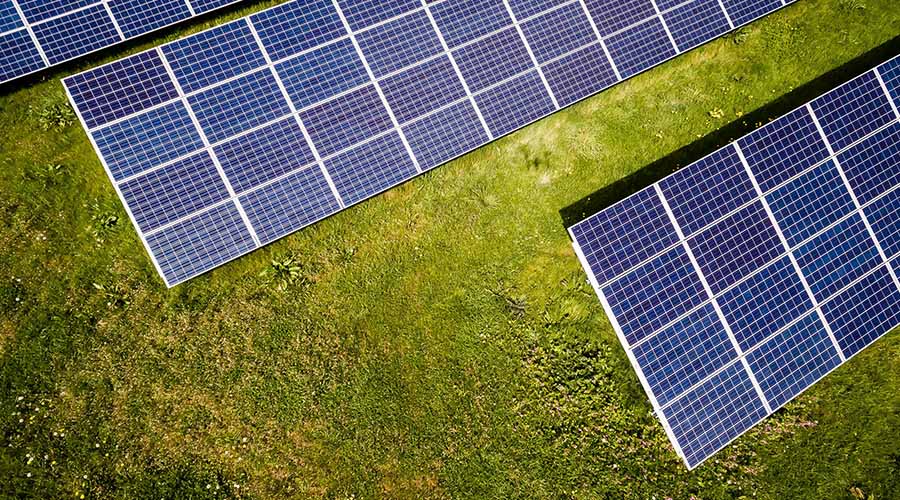
Bangalore may enjoy a milder climate compared to other cities, but rising electricity costs due to urban living and increased energy consumption remain a concern. Installing a 3 kW solar panel system provides a cost-effective way to reduce grid dependency and enjoy lower electricity bills.
With generous solar subsidies, making the switch is easier than ever, enabling households to harness Bangalore’s consistent sunlight while cutting down on expenses.
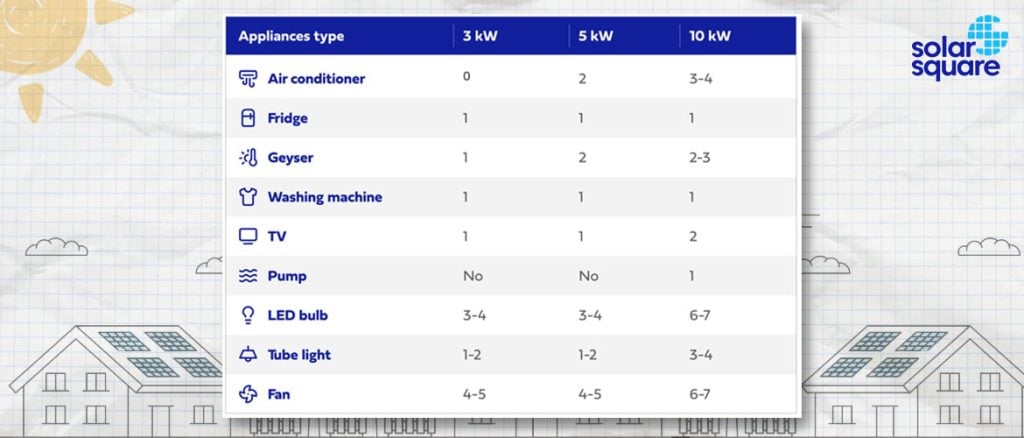
For most 2-3 BHK households, a 3 kW solar panel setup offers an ideal solution. It strikes the right balance between affordability and efficiency, allowing you to convert sunlight into savings on your energy bills. This system has enough capacity to power essential home appliances, helping you stay cool during hot summers while reducing your reliance on the electrical grid.
Here’s an overview of the 3 kW solar panel price in Bangalore, including subsidies and installation, along with some tips on selecting the best rooftop solar system for your home.
3 kW Solar Panel Price in Bangalore with Subsidy 2025
The table below outlines the 3 kW Solar Panel Price in Bangalore, with installation—both with and without the subsidy.
| Without subsidy | ₹2,32,000 – ₹2,68,000 |
| With subsidy | ₹1,54,000 – ₹1,90,000 |
Tips for Selecting the Best 3 kW Solar System
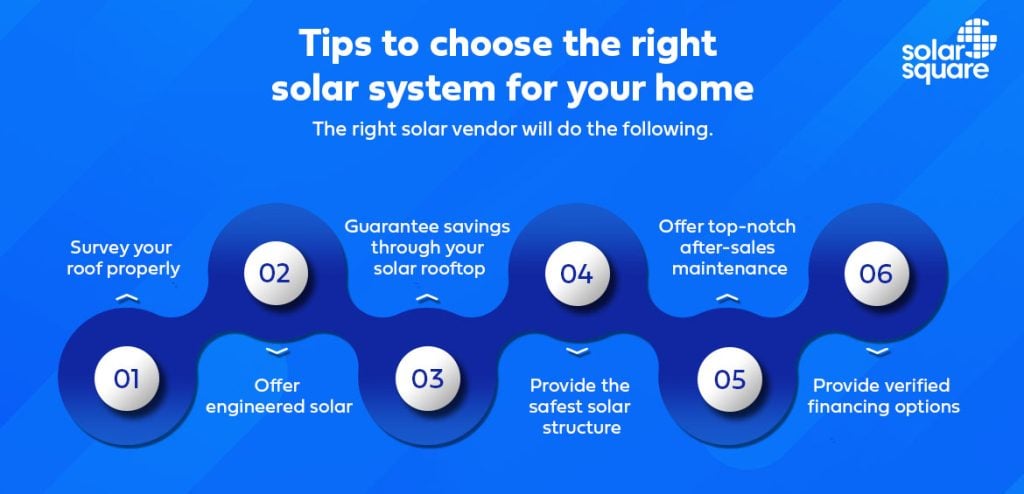
To help you choose the right rooftop solar system for your home, here are some tips to consider.
1. Choose a Provider Who Conducts a Thorough Roof Survey
Not all installers carry out detailed roof inspections, which can result in poorly aligned panels or sloppy installations. To avoid this, go for a company that employs technology for shadow analysis throughout the year, pinpointing any obstructions that could affect your system.
A proper roof assessment should include evaluating available space and estimating your energy needs. This approach ensures optimal system performance and minimises risks such as hotspots, reduced power output, or even fire hazards.
2. Opt for a Vendor Who Offers Tailored Engineering Solutions
A generic installation may not address your home’s unique requirements. Many local solar companies overlook the structural aspects of your roof, leading to less efficient setups. Choose a provider that uses precise engineering to design your solar solution, ensuring it fits your roof’s specifications for safe and efficient energy production, leading to a higher return on investment.
3. Look for a Vendor That Guarantees Savings
Research by CEEW and PV Diagnostics shows that over half of solar systems underperform in the first year, with a further 30% decrease in the second year. Secure your investment by choosing a vendor that guarantees savings and provides compensation for any power generation shortfalls. This ensures you get the value expected from your solar installation.
4. Ensure the Provider Offers Certified, Storm-Proof Structures
With extreme weather events becoming more frequent, your solar system must be built to withstand tough conditions. Choose a vendor offering cyclone-resistant and certified structures designed to endure high winds. This ensures your solar installation remains secure regardless of the weather.
5. Prioritize Ongoing Maintenance and Support
Solar systems need regular upkeep to operate efficiently. Choose a provider offering comprehensive maintenance services to keep your system running smoothly for years. Maintenance packages should cover cleaning, inspections, and system optimization.
6. Verify the Availability of Financing Options
The initial cost of solar installation can be high. Select a vendor that provides reliable financing options, making it easier to manage the upfront expense. Verified financing arrangements allow for a seamless transition to solar energy, alleviating the financial burden.
Why Choose SolarSquare’s 3.24 kW and 3.78 kW Systems?
Unlike standard 3 kW options, SolarSquare’s 3.24 kW and 3.78 kW systems feature advanced Monoperc half-cut bifacial modules with 545-watt capacity. This results in a more efficient setup that requires fewer panels—6 for 3.24 kW and 7 for 3.78 kW—compared to the impractical 5.5 panels needed for traditional systems.
The benefits Include:
- Quick Installation: With factory-precision components, our solar systems can be installed in just 8 hours.
- Comprehensive Maintenance: Our PowerBoost maintenance service includes regular monthly visits over five years, covering thorough cleaning and preventive checks.
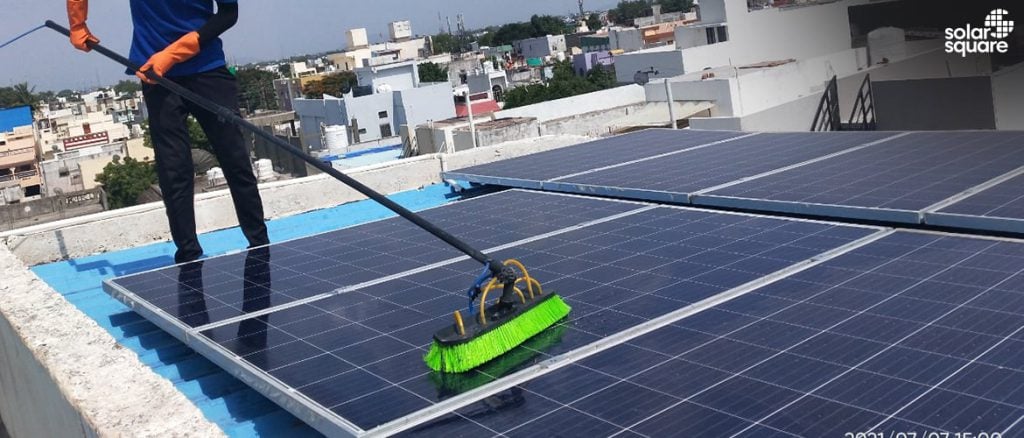
- Leak-Proof Installation: Installation complete with HILTI AirTight chemical anchoring, backed by a ₹1 lakh water leakage-free guarantee.
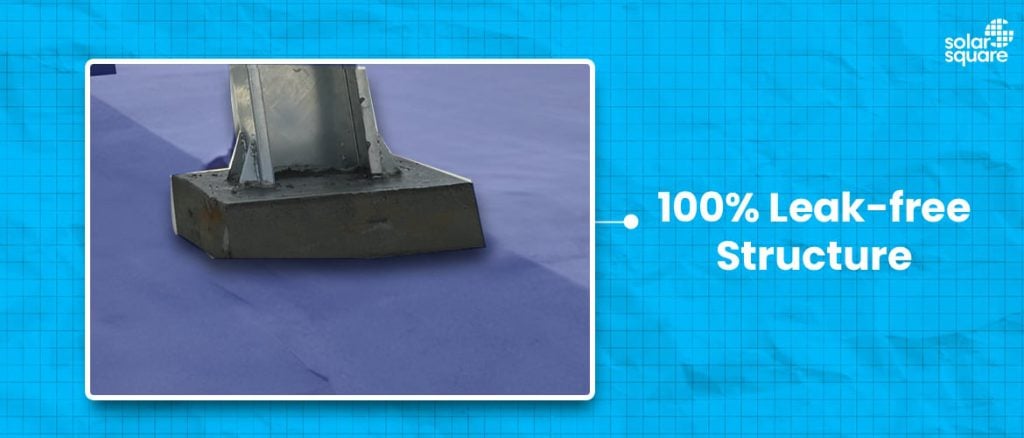
- Guaranteed Savings: The only company in India that offers a savings guarantee, paying ₹8 per unit for any generation shortfall.
- Durable, High-Quality Structures: Our WindPro Mount™, certified by IIT-Bombay, can handle wind speeds up to 170 km/h with its sturdy tapered C-channel structures. Thanks to the Japanese Poka Yoke technique, every installation is fault-free and weld-free.
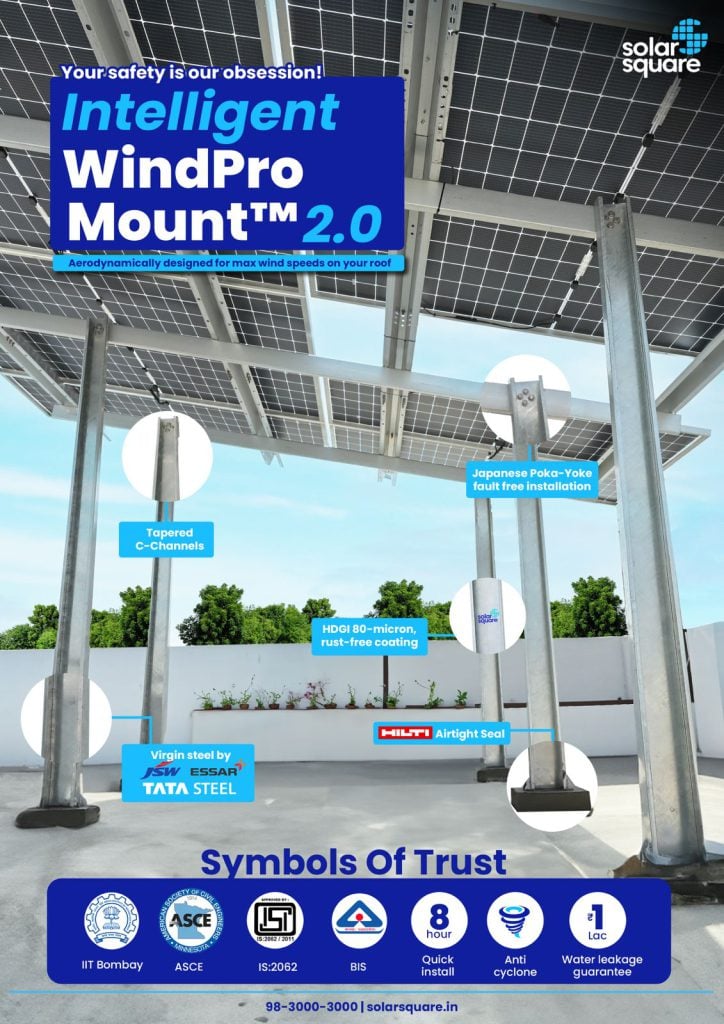
- Long-Lasting Materials: Using virgin steel and an 80-micron hot-dip galvanised coating, our systems are corrosion-resistant and built to perform for over 25 years, even in challenging environments like coastal or humid areas.
- Direct Service Model: SolarSquare manages every step in-house, from installation to maintenance.
- Flexible Financing: Our EMI options make it easy to manage costs, with the subsidy offsetting the down payment. Excess power generation can earn credits through the DBT scheme.
Book your free consultation with SolarSquare today to get the best 3 kW solar system for your home in Bangalore!
FAQs
Q1: How many panels are needed for a 3 kW system?
Ans. To achieve 3 kW, SolarSquare’s 545-watt panels require about 6 panels (3,000 watts/545 equals roughly 5.5, rounded up to 6). Older panel types may need more to reach the same capacity.
Q2: What is the power output of a 3 kW solar system?
Ans. A 3 kW system generally produces around 4,200 kWh annually, depending on factors like location, panel efficiency, and weather.
Q3: What appliances can a 3 kW system support?
Ans. It can power several household items, such as:
- 4-5 ceiling fans
- 3-4 LED lights
- 1-2 tube lights
- An air conditioner
- A refrigerator
- A television
- A washing machine
- Kitchen appliances (microwave, mixer)
- Laptops and chargers
This capacity is suitable for an average Indian household.
Q4: How many AC units can a 3 kW solar system run?
Ans. A 3 kW solar system might not be enough to run a 1.5-ton air conditioner (AC) along with a few smaller appliances. If you use more than one AC at the same time, it could go beyond the system’s limit, especially when there’s not enough sunlight.
Q5: Is a 3 kW system sufficient for an entire home?
Ans. For an average household, 3 kW covers essential energy needs like lighting, fans, and regular appliances. Homes with higher consumption may need a larger system.
Q6: Can my roof accommodate a 3 kW system?
Ans. SolarSquare conducts detailed roof inspections and shadow analysis to determine suitability, ensuring a tailored design.
Q7: Can I expand my existing 3 kW solar system?
Ans. Yes, SolarSquare offers upgrades. Contact us for more details.


 1038 Reads
1038 Reads 6 mins
6 mins




.png)


.png)